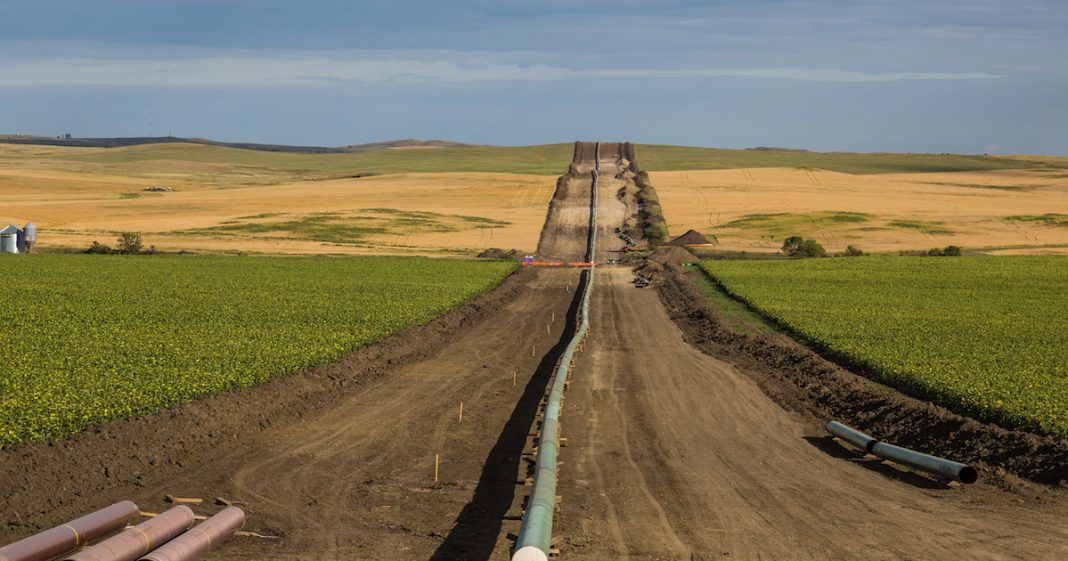On April 4th, the Dakota Access Pipeline (DAPL), which has been the subject of ongoing protests and legal battles, leaked 84 gallons of oil even though the pipeline is not yet operational. South Dakota’s Department of Environment and Natural Resource (DENR) posted a report on the spill on their website, but did not bother to issue a press release or notify the public.
The spill came two weeks before US District Judge James Boasberg ruled that the public did not need to be informed about spill risks.
Brian Walsh, an environmental scientist with the DENR, told CBS Denver that since there was not a threat to the public, a fishery, or to drinking water, a news release was not needed. The nearest water supply is around 100 miles away.
Walsh explained:
“We realize Dakota Access gets a lot of attention. We also try to treat all of our spills in a consistent manner. We treated this as we would treat any other 84-gallon oil spill.”
The spill took place at a pump station during work to get the pipeline fully operational by the June 1st deadline. Crews used a plastic liner and containment walls to prevent the spill from spreading. Walsh says that gravel from the spill site will be disposed of at a local landfill.
In response to the spill, indigenous tribes in the area have stepped up their calls for increased environmental studies of the pipeline. When President Trump called for the pipeline to be completed quickly, additional studies were cancelled. Without additional study and more protections in place, water protectors say that spills from the DAPL and other pipelines will continue. Standing Rock Sioux tribal Chairman Dave Archambault told CBS Denver:
“These spills are going to be nonstop. With 1,200 miles of pipeline, spills are going to happen. Nobody listened to us. Nobody wants to listen, because they’re driven by money and greed.”
Likewise, Dallas Goldtooth of the Indigenous Environmental Network said in a statement:
“This spills serves as a reminder that it is not a matter of if a pipeline spills, it’s a matter of when a pipeline spills. The fact that this occurred before Dakota Access even becomes operational is all the more concerning. We fear more spills will come to bear, which is an all too frequent situation with Energy Transfer Partners pipeline projects. As such, eyes of the world are watching and will keep Dakota Access and Energy Transfer Partners accountable.”
Energy Transfer Partners, the pipeline’s developer, seemed unconcerned with the spill. Spokesperson Vicki Granado said in a that the spill “stayed in the containment area as designed.”
Energy Transfer Partners will not face any fines and work will continue as scheduled, as the DENR is happy with the way the spill was handled. Walsh noted that, “size-wise, an 84-gallon release is pretty small relative to a lot of other things we work on. I would characterize it as a small operational spill that was cleaned up right away.”




![Senator Schumer: “Single Payer [Health Care] is On The Table”](https://sandbox.trofire.com/wp-content/uploads/2017/07/Universal-Healthcare-218x150.jpg)